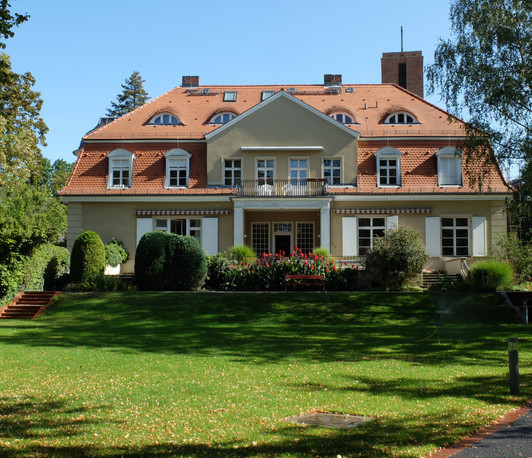Surprising Elements of Light
- Date: Jan 5, 2023
- Time: 03:00 PM (Local Time Germany)
- Speaker: Prof. Dr. Erik Garnett
- FOM Institute AMOLF, Amsterdam, Netherlands.
- Location: Building M, Richard-Willstätter-Haus, Faradayweg 10, 14195 Berlin
- Room: Seminar Room
- Host: Interface Science Department
- Contact: oener@fhi-berlin.mpg.de

This talk will detail three completely new types of chemistry enabled by controlling light at the nanoscale.
First, I will discuss our recent discovery that by slightly changing the illumination wavelength in plasmonic nanoreactors, we can completely change the reaction product and mechanism.1 We further use the plasmonic resonance itself to help understand the mechanism and track the reaction kinetics, showing that heating is not an important factor in the reaction selectivity.
Second, I will show that non-traditional metal nitride plasmonics combined with pulsed lasers can lead to unprecedented thermal gradients in both time and space – 1000K per picosecond and 10K per nanometer.2 Such enormous thermal gradients open up completely unexplored realms of chemistry where adjacent catalytic sites could be at substantially different temperatures, or reactions can run at surface coverages very far from the equilibrium value.
Finally, I will show that light can drive a solid-state reaction – the nucleation of local emitters in mixed halide perovskites – at preprogrammed positions. More exciting – we have found that combining such material systems with nanophotonic microlenses enables reciprocity-inspired material learning.3 The system self-optimizes its nanoscale structure to more accurately and more quickly reproduce a desired stimulus upon repeated training. These three examples highlight the surprising chemistry that can occur when using light to inject energy into a reaction with very high precision in both space and time.
References:
1 “Energy-resolved plasmonic chemistry in individual nanoreactors” Oksenberg et al., Nature Nanotechnology, 2021
2 “Ultrafast thermal imprinting of plasmonic hotspots” Askes and Garnett, Advanced Materials, 2021
3 “Perovskite plasticity: exploring instability for self-optimized performance” van der Burgt et al., Advanced Functional Materials, 2022